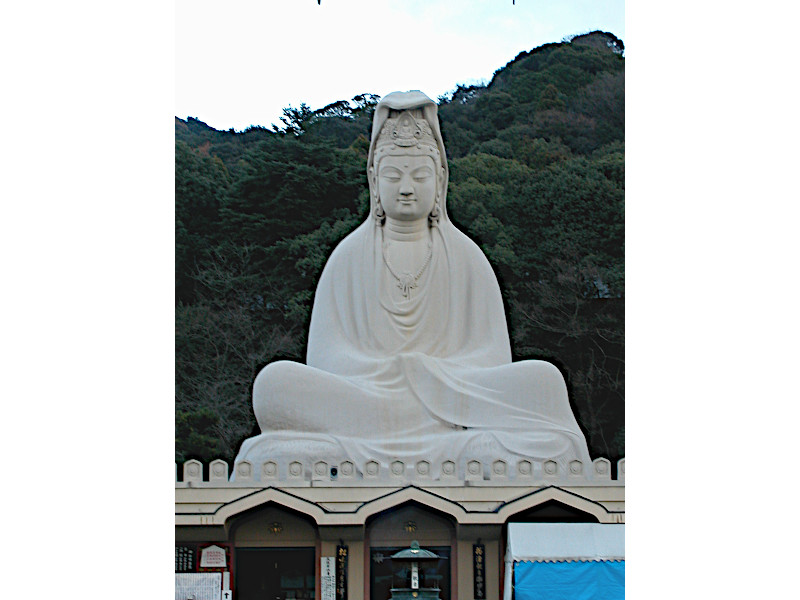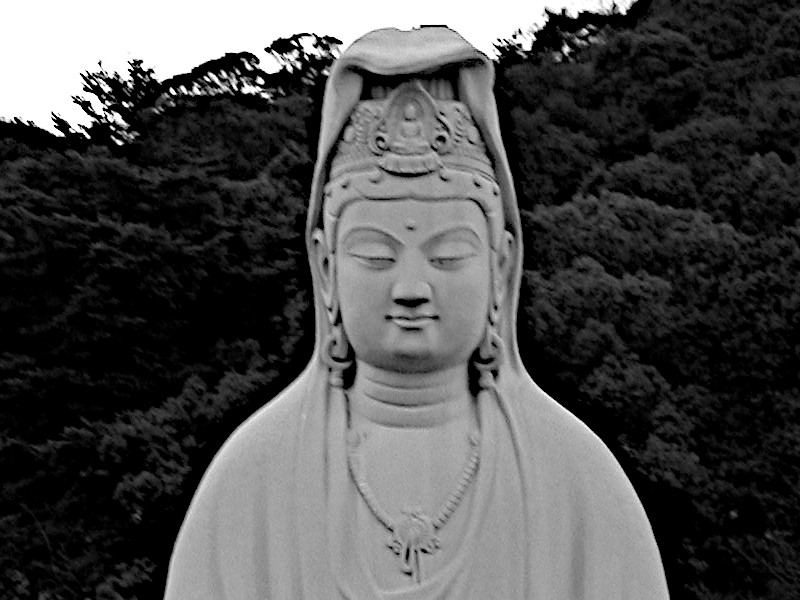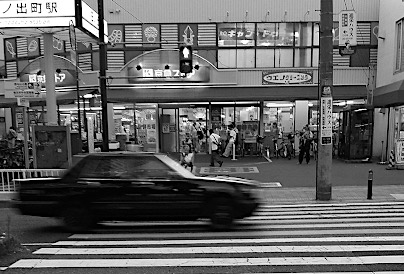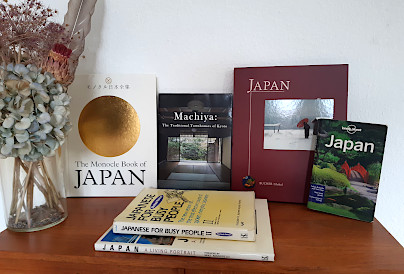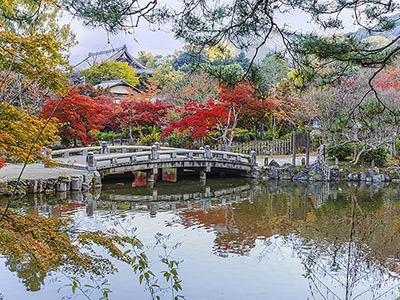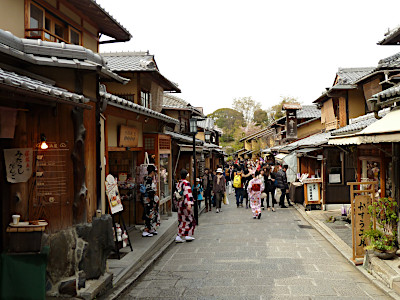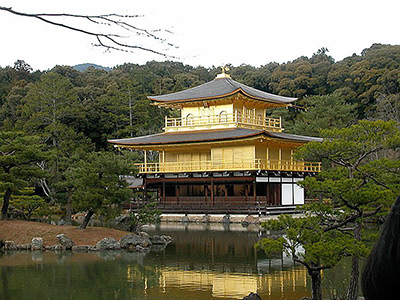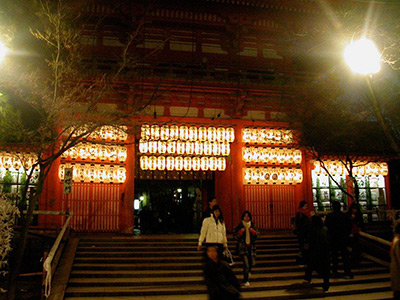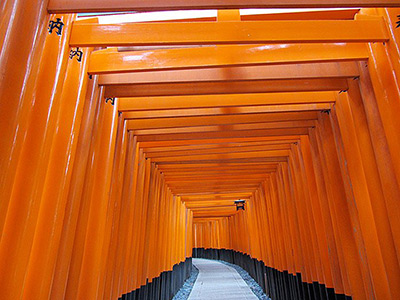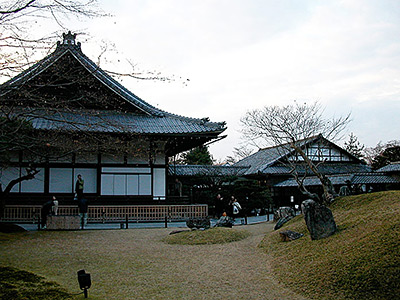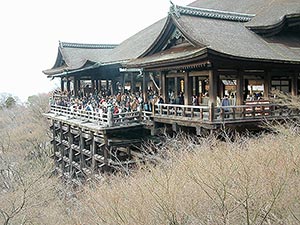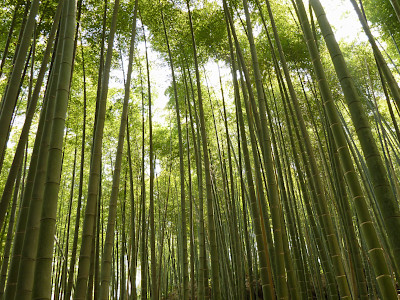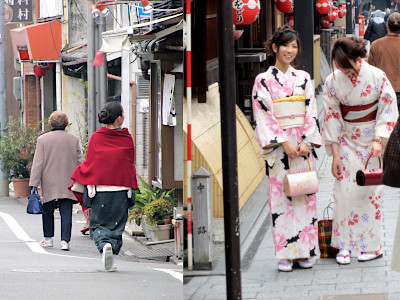Ryozen Kannon War Memorial in Kyoto
This post can contain affiliate links, which means that we may receive a small commission if you make a purchase using these links.
Facts & Figures
This gigantic sitting Buddha statue (Daibutsu) is a war memorial for the missing and dead of the Asia-Pacific War (1931 - 1945). The eye-catching statue, also know as Bodhisattva Avalokitesvara, is 24m high and can be found in the Higashiyama District in Kyoto. The statue is made of reinforced concrete and its weight is approximately 500 tons. The scale of the face alone is 1.10m. Btw you are allowed to enter the statue. At the backside of the main temple is a stairway that brings you into the lower body (inner womb - tainai) of Ryozen Kannon where you can see a collection of 12 Buddhist statues representing the zodiac year. People come here to make a prayer in front of the guardian angel based on their date of birth. If you want you can also join one of the four daily memorial services at this place. But there is more to discover on the grounds of Ryozen Kannon like several monuments and records related to two million Japanese war dead, monuments for the souls of unborn babies and samples of soil which came from cemeteries where the war dead were buried.
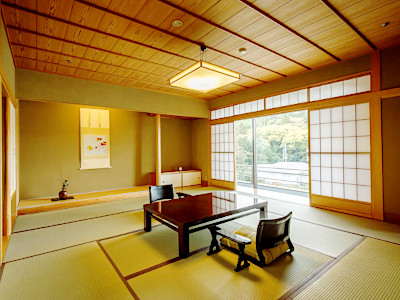 Explore Ryokans in Kyoto >
Explore Ryokans in Kyoto >
Ryokans are the perfect way to discover old Japanese culture and traditions.
- Ryozen Kannon:
- Opening Hours - 8:40 am to 4:20 pm (last entry at 4:00 pm)
- Closed - no closing days
- Admission Fee - 300 yen (Adults), 200 yen (Junior high school student & Senior high school student), 100 yen (Elementary school children)
My tips for local activities
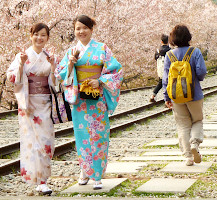
How about exploring the best parts of my favourite city Kyoto with a local guide? The personalized tour by our partner GetYourGuide can take between 2 - 8 hours. For more details check out this page >
History
Ryozen Kannon was built in 1955 by business magnate and head of the Teisan group - Ishikawa Hirosuke (1891 – 1965). Ishikawa Hirosuke intention was to create a place to commemorate soldiers of the former Imperial Japanese Navy and Army as well as Japanese civilians, and later added another memorial dedicated to Allied Second World War prisoners of war (POWs). The designer of the statue was famous sculpture Choun Yamazaki (1867 - 1954). It was also his last work before he died. He formed this Kannon after the image of Byakue-Kannon.
Location

Ryozen Kannon is located within the Higashiyama District in Kyoto near Maruyama Park and Kodai-ji Temple.
Address: 388 Yasakakamimachi, Kiyomizu Higashiyama-ku, Kyoto
How to get to Ryozen Kannon?
- 20min from Kyoto Station to Gion bus stop by bus number 206 or 207 and
- 10min walk from Gion bus stop to Ryozen Kannon
Sightseeing spots
Top:
Reihaiden - This hall contains 600000 small Buddhist tablets (ihai) for Japanese and others who died in the Asia-Pacific War.
Memorial Hall - The hall was constructed in 1959 and on display are the monument for the unknown soldier, cabinets with the names of thousands of Allied POWs and vessels of soil from war cemeteries from all over the world.
Kagimi-ike-pond - A large reflecting pool in front of the Ryozen Kannon inhabits numerous and beautiful lotus blossoms during summer.
Buddha's footprint - The stonework stands as a symbol of Buddha. They used granite to create a long-lasting work.
Nousashou-Nyoi-Houju - This huge golden sphere is the hidden treasure of esoteric Buddhism. Touch it with your hand while making a wish. It will hopefully make your wish come true. The spherical shape represents btw the image of an absolutely perfect being.
Festival & Events (dates can change without notice)
March
Higashiyama Hanatouro Festival (Early - Mid March)
The illumination of local temples and roads by thousands of lanterns in the Higashiyama neighbourhood last for 10 days and starts at 6pm until 9:30pm. It is an unforgettable experience.
April
Miyako Odori (1st - 31th)
The traditional annual spring dance of the Kyoto district Gion Kobu performed by Geiko and Maiko is a must-see on your Kyoto visit. Don't miss the most popular dances the Miyako Odori "Cherry Blossom Dances" or "Dances of the Old Capital" at the Gion Kobu Kaburenjo Theater (located close to Gion Corner).
May
Aoi Matsuri (15th)
The highlight of this festival is a large parade from Imperial Palace through Shimogamo Shrine to the Kamo Shrines. More than 500 people wearing aristocratic costumes from the Heian Period (794 - 1185). The Aoi Matsuri belongs with the Gion Matsuri and Jidai Matsuri to the three most famous festivals in Kyoto.
July
Gion Matsuri (whole month)
The month July is full of different events like the Yoiyama - Kyoto's Magical Night (locals in kimonos look at the giant Gion floats the day before the parade) or the famous Yamaboko Junko (float procession on the 17th of July).
October
Jidai Matsuri ("Festival of Ages") (22nd)
People celebrate with a large parade between Imperial Palace to Heian Shrine the anniversary of the foundation of Kyoto. App. 2000 participants wearing historical costumes from different time periods. Enjoy this great festival which last around 2 hours.
Where to stay in Kyoto?
Day trips from Kyoto:
My 100 Best Moments in Japan
I have visited Japan nearly every year since 2004. This is my collection of the 100 best moments in my favorite country. Enjoy the pictures and I hope you will start your own journey soon.
Find out more >
Books about Japan
Reading books is a great source of inspiration for me. Check out my recommended list of books about the fascinating country Japan.
My Book recommendations >

